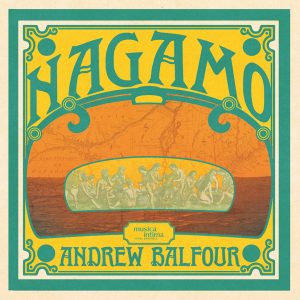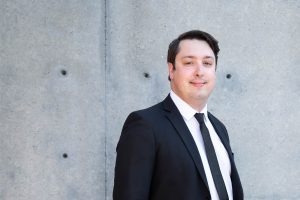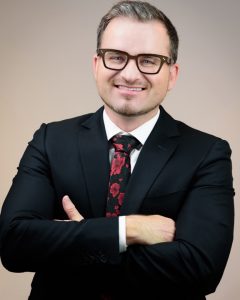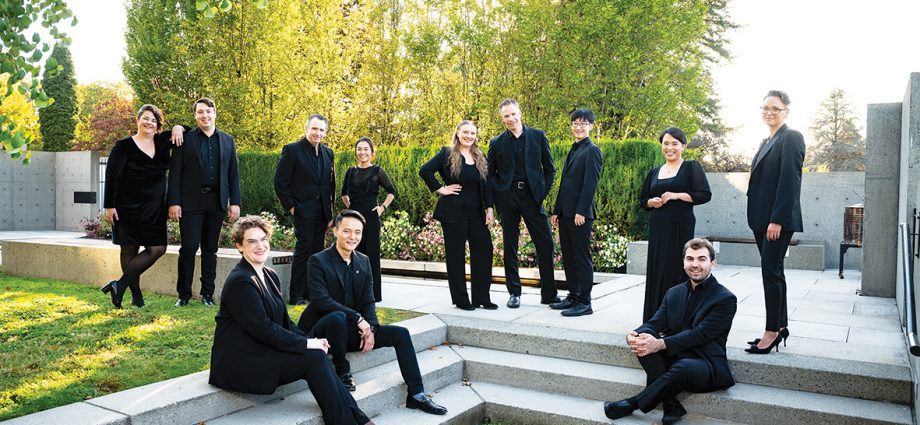Interview by Isabelle Métrope, International Choral Magazine Managing Editor
NAGAMO is a choir cooperation project between Musica Intima, Shallaway Youth Choir, Korora choirs and several solo singers performing together Andrew Balfour’s NAGAMO, a one-of-a-kind piece of music incorporating English Renaissance and Canadian Indigenous cultures.
Can you describe the NAGAMO project in 3 lines?
Jacob Gramit (JG), musica intima: At its core, NAGAMO is an idea: Andrew’s fantastical imagining of how cultural sharing could have better unfolded between settlers and Indigenous peoples. This idea is represented in the music, in the concert structure, in the collaborations with other ensembles and artists; but essentially it is a step towards choral reconciliation.
Scott Leithead (SL), Korora choirs: Regarding the piece of music itself, NAGAMO is a reimagining of works of the English Renaissance choral canon as viewed through the lens of Indigenous spirituality. Andrew Balfour considers it an exploration of an alternate version of history in which settlers and Indigenous people built upon early relations that were founded in mutual respect and honour.
What is the message of NAGAMO?
SL: NAGAMO shows us that there’s an opportunity in Canadian choral music to build a new choral canon that brings together Indigenous languages and voices with our pre-existing colonial choral traditions, to move forward together in a way that is reconciling.
JG: Over the course of the performances, we explore themes of welcoming, struggle, mourning, and ultimately hope. So I hope the audience leaves both challenged and fulfilled – but also asking what they can do in their own lives to decolonize, be it through art or business or anything.
What was the impulsion behind the birth of NAGAMO?
JG: Andrew shared an idea of translating music of William Byrd into Indigenous languages, and musica intima was thrilled by the idea. We basically told Andrew we wanted to do this project, whatever it looked like – and he developed the concept, repertoire, and everything from that point. It began as a one-off concert in Vancouver, and we quickly realized how much it could grow, so we made the recording and we began planning the first cross-Canada tour.
What is the structure of the piece regarding the different actors – choirs, soloists, drummers group?
JG: Beyond just a concert, Andrew wanted to create a larger event – he introduced the concert as a ‘ceremony of healing and respect’ – and part of that was him suggesting we invite local song-keepers, from wherever we were, to be a thread throughout the evening. In Vancouver we were lucky to partner with Lexwst’í:lem, a local drum group, and across the country we worked with Cory Campbell, Rosary Spence, Sherryl Sewepagaham and Deantha Edmunds (presenting some of their own music as both soloists and in concert with our combined choirs). As we planned the tour, we wanted to ensure it wasn’t just musica intima parachuting in, so we worked to connect with youth-based institutions in each place, creating collaboration on another level. We worked with the Toronto Children’s Chorus and Youth Choir, ensembles at Western University, Shallway Youth Choir, the University of Manitoba, and Korora Choirs, and in each place, we learned so much from the young singers and I know they learned so much from working with Andrew first-hand. The events that were created at the end of each period of workshops were all so special – these beautiful collaborations showcasing so many different artists, but all coming together to create the music and ideas at the heart of NAGAMO.
SL: Joining musica intima on a few of Andrew’s works, including some from NAGAMO, let us explore Andrew’s vision as well as experience singing in Ojibway while performing music from the English Renaissance. We also opened each concert with a greeting, blessing and land acknowledgement provided by a local Indigenous elder.
What are the themes of the music pieces included in NAGAMO?
SL: Andrew Balfour describes the text as exploring and expressing Indigenous spirituality, while also acknowledging the resonance between the original texts of the pieces (most of which were in Latin, but some in English) and the text Andrew has set.
What were the expectations of musica intima / Korora / Shallaway before entering the cooperation?
JG: We didn’t really know what to expect, either from the beginning of the project or the beginning of the tour! But Andrew came and so seamlessly worked with musica intima. It didn’t feel like a ‘guest director’ as much as that was his role – it was really just like we had a thirteenth member in the room. We were lucky enough by the end of the tour that Andrew was singing with us in performances, it really felt like we all belonged together in such a beautiful and organic way.

How did the choir singers – and their conductors! – experience the project?
SL: Our singers described their time with Andrew as breathing spirit into the music which felt, before we had the chance to work with him, a little unfamiliar and distant from their lived experience. Some of our singers were more familiar with the style and genre of English Renaissance polyphony, while some of our younger members were newer to it, but all agreed that they loved Andrew’s version of the works and felt a new and different connection to the music afterwards.
JG: I’ve heard from so many singers in musica intima that this was one of their favourite projects they’ve ever been part of. The work Andrew created was so wonderful to sing and share in, and coming back to the ideas and the repertoire again over such a long period was a unique opportunity in the professional choral world. One of our singers, Katherine Evans, talked about the texts Andrew chose: “The texts Andrew chose had a different specific meaning than the text of the original, but the universal meaning was really the same. And the fact that these texts were generally short and very evocative, and then I was able to sit with them, and really sing them – I’m going to internalize that so much more easily… if you can sing them over a period of time and with music that is so beautiful and share it with other people… then it makes those words a part of me in a different way… I do think that once those words are in your heart, then they stay.”
SL: Most of the NAGAMO music was performed unconducted, which is intima’s tradition. This was a great challenge and opportunity for growth for our choirs, who are very accustomed to having one of us waving our arms! As conductors, we enjoyed watching our singers own their musicality and independence more thoroughly than they might usually need to do.
Which were the challenges for the choirs of singing this piece of music? Music-wise, language-wise?
SL: Prior to meeting with Andrew and musica intima, the challenges were twofold: firstly, that English Renaissance polyphony can be difficult, especially for younger and/or less experienced singers; secondly, we were working to understand the way in which Andrew’s Ojibway text would connect with the music of another age. Once we were working with musica intima and Andrew, we came to understand these connections and the focus turned to embodying the music in a joyful and grounded way.
In what manner can this project be setting a trend of reshaping the choral art?
JG: It is my greatest hope that this project is permission for other ensembles to give away their control. We, musica intima, with our twelve artists, have always been afraid of outside curators. But that’s where the most exciting collaborations are; perspectives outside our own. For ensembles with one permanent Artistic Director, especially on Turtle Island (North America), we see this model: I challenge conductors to look outside their own ideas to create events with other artists. Of course, repertoire is a huge part of that – who isn’t represented on your programs? But collaboration with other artists is so fulfilling – I wish that joy on all choristers and artistic leaders.
Are there future concerts or cooperations planned?
JG: I hope the future holds many more collaborations between Andrew and musica intima – who knows what projects will crop up down the road. We’ve been talking about the close of this NAGAMO tour as only the end of the first chapter – but there’s still so many more places to take this project, which I know the future will hold.

Jacob Gramit is a Vancouver-based settler baritone, specialising in the music of the baroque and renaissance. After Early Music studies in the Netherlands, he returned to the stolen lands of the Musqueam, Squamish, and Tsleil-Waututh Nations, and to musica intima, with whom he has been the Artistic Manager since 2020. jacob@musicaintima.org
Founded in 1992, musica intima is a collaborative and conductor-less vocal ensemble which has championed Canadian music on stages around the world. Its shared leadership model allows twelve members to exchange ideas freely and explore individual musical creativity. www.musicaintima.org
 Scott Leithead is the founder and Artistic Director of Edmonton’s Korora Choir Association. He has been invited to conduct provincial and state honour choirs on twenty-five occasions and he has presented workshops in North America and beyond. Notable appearances include adjudicating the Tampere International Festival in Finland; conducting the Ellison Canadian Honour Choir; and headlining the University of Toronto Summer Conducting Symposium. He has adjudicated both the Choral Canada Competition for Amateur Choirs and the Kathaumixw International Choir Festival.
Scott Leithead is the founder and Artistic Director of Edmonton’s Korora Choir Association. He has been invited to conduct provincial and state honour choirs on twenty-five occasions and he has presented workshops in North America and beyond. Notable appearances include adjudicating the Tampere International Festival in Finland; conducting the Ellison Canadian Honour Choir; and headlining the University of Toronto Summer Conducting Symposium. He has adjudicated both the Choral Canada Competition for Amateur Choirs and the Kathaumixw International Choir Festival.
Korora is the flagship ensemble of Edmonton’s Korora Choirs. Korora has received top rankings consistently on the Canadian national festival stage, but remains focused on training young singers while providing audiences with innovative musical performances. office@kororachoirs.com
The concert we presented in St. John’s on March 11th was truly moving, for the performers as well as the audience.
Deantha Edmunds. Soloist of NAGAMO
As for my part of the NAGAMO concert with Musica Intima, Shallaway Youth Choir and Ullugiagâtsuk, I sang a solo called Avani (meaning ‘up North’ in Inuttitut). I dedicated my performance to the youth of Ullugiagâtsuk who travelled from Nunatsiavut (the ancestral homelands of the Labrador Inuit) to join us in song. This song is about having courage, perseverance, and being proud of who you are and where you come from.
“Reach to the ends of the earth!
The top of the mountain calls for you to rise above,
dawn to dusk, with faith and trust.
*Tutsiak, IssoKangitumut, katinngak.
Avani… Avani!”
(*Inuttitut for ‘singing together forever… up North’).
The song “Avani” is on Deantha’s recent award-winning album Connections
I also sang an original song called Legacy, as the soloist in a choral arrangement by Leslee Heys for string quartet and oboe accompaniment. I wrote this song to honor and uplift the voices of the Missing and Murdered Indigenous Women, Girls, and Two-Spirit + people. I wanted to let those lost and stolen sisters know that we will never forget them and we will carry on their love.
It was an honour and an incredible experience to perform this song as a soloist with the cooperation choirs, accompanied by the Atlantic String Quartet with oboist Annie Corrigan. We sang in English as well as the chorus in Inuttitut.

Deantha Edmunds is Canada’s first Inuk professional classical singer. Through performing, writing, and composing, she aims to empower Indigenous people and share their stories. Actively working on creating original works and mentoring young Indigenous artists, Deantha sings her heart out and turns heads across Canada & the world. deanthae@hotmail.com
Edited by Katie Maxfield, Canada

